Whistory
This SPOTLIGHT special edition focuses on the second known example of the TRAFFIC escargot. It was first brought to light by another website/blog and has since been seen a third time. However, we thought to take a closer look at its name, background and construction. Not monotypic, but still very rare.
The underside is struck with S.A. French N.Y.
Who Was S. A. French, a Maker or Distributer?
Samuel Aldin French was a New York distributor and not a manufacturer, who supplied goods for the military and police at first and then restricted himself to just police equipment… His stamp can be seen from the underside of the escargot whistle seen below.
The S. A. French Escargot, An Unusual Construction
This whistle, although looking bulky and heavy is very well thought out. The large finger ring is surprisingly solid, and the parts are attached fully. Interestingly no other whistles show the hallmarks of this maker.
However, there is some French influence to be discerned.
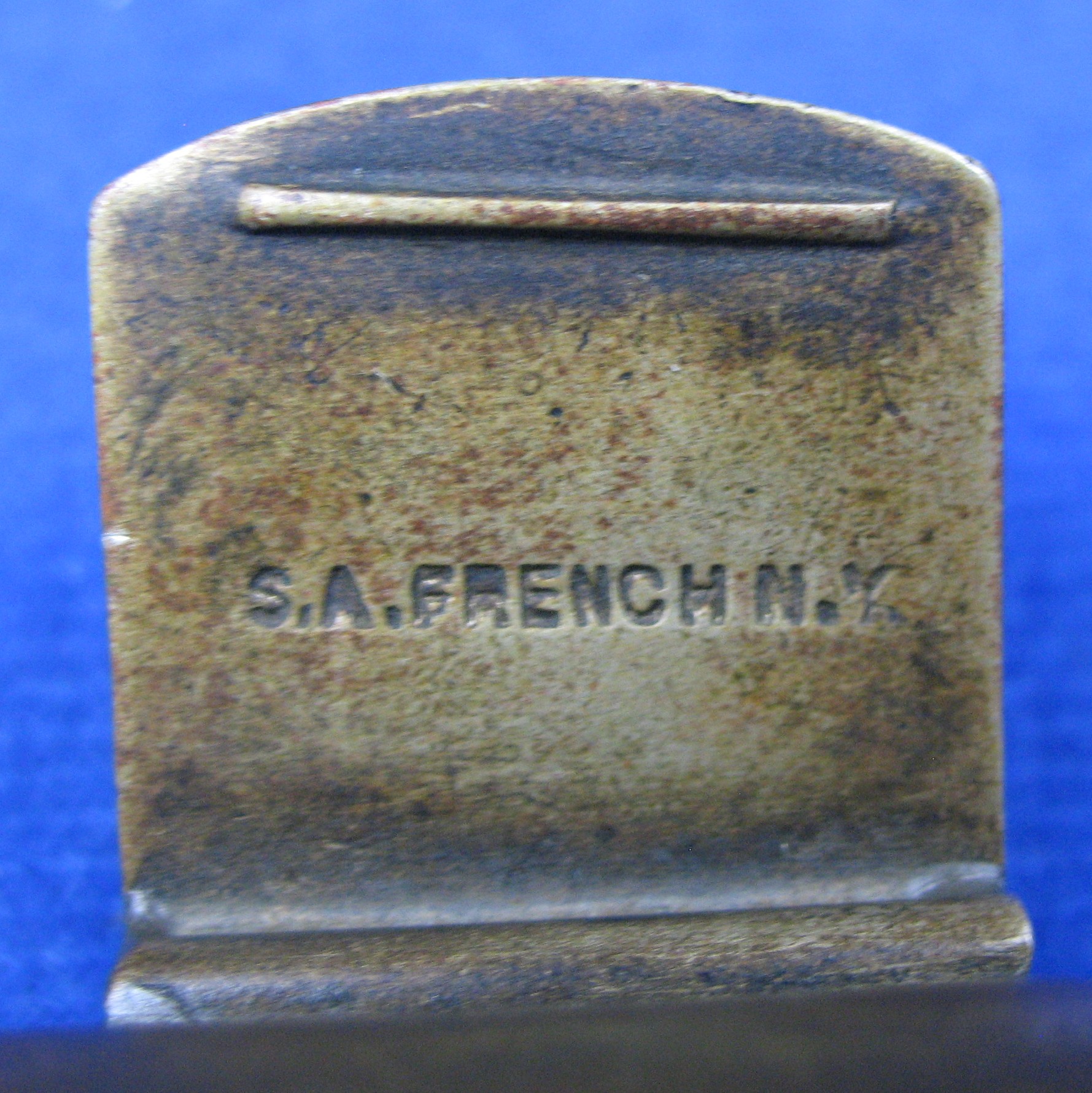
Whistle Classification
| Category | escargot |
| Order | S. A. French (distributor) |
| Type | police |
| Class | nickel silver |
| Sub class | cast brass large ring |
Whistle Archeology
S. A. French, Background on the Distributor (Born 1856, Death 1926)
S.A. French was born in 1856 and at 29 he opened his retail business that would span over four decades. His products included buttons, clubs and whistles. Products were of John J. Tower, Ed Bean and others, it is uncertain whether Tower manufactured his whistle, he certainly was capable of doing so.
However, the under strengthening leans towards French manufacturing. Samuel French was also an inventor holding two patents. He is most notably known for his presentation night sticks.
1885 – 1895 400 Broome Street ( military and police goods )
1895 — 1925 108 West 28th ( police goods only )
He died in 1926 and at this time the business ceased.
Scope of S. A. French’s Whistles
Besides the escargot, French distributed a unibody tube shaped whistle with the S.A. French stamp along with Metropolitan on the top cap around the loop. There was nothing significant about it. Perhaps others will be identified with his name on them, but in the many years of collecting and studying nothing has made itself known..
A catalog was issued in 1887 of 40 pages. His pre 1900 catalogue also carried BGI and Hudson whistles. There, what appears to be a Hudson Metropolitan Police picture has S.A. French stamped on the front. Studies have shown that the Metropolitan Police stamp was at first restricted to London Police and then was used by other constabularies.
It is remarkable that for four decades S.A. French traded in New York and yet few of these escargots have surfaced. No catalog has shown this whistle.
Whistology

Now the full view…
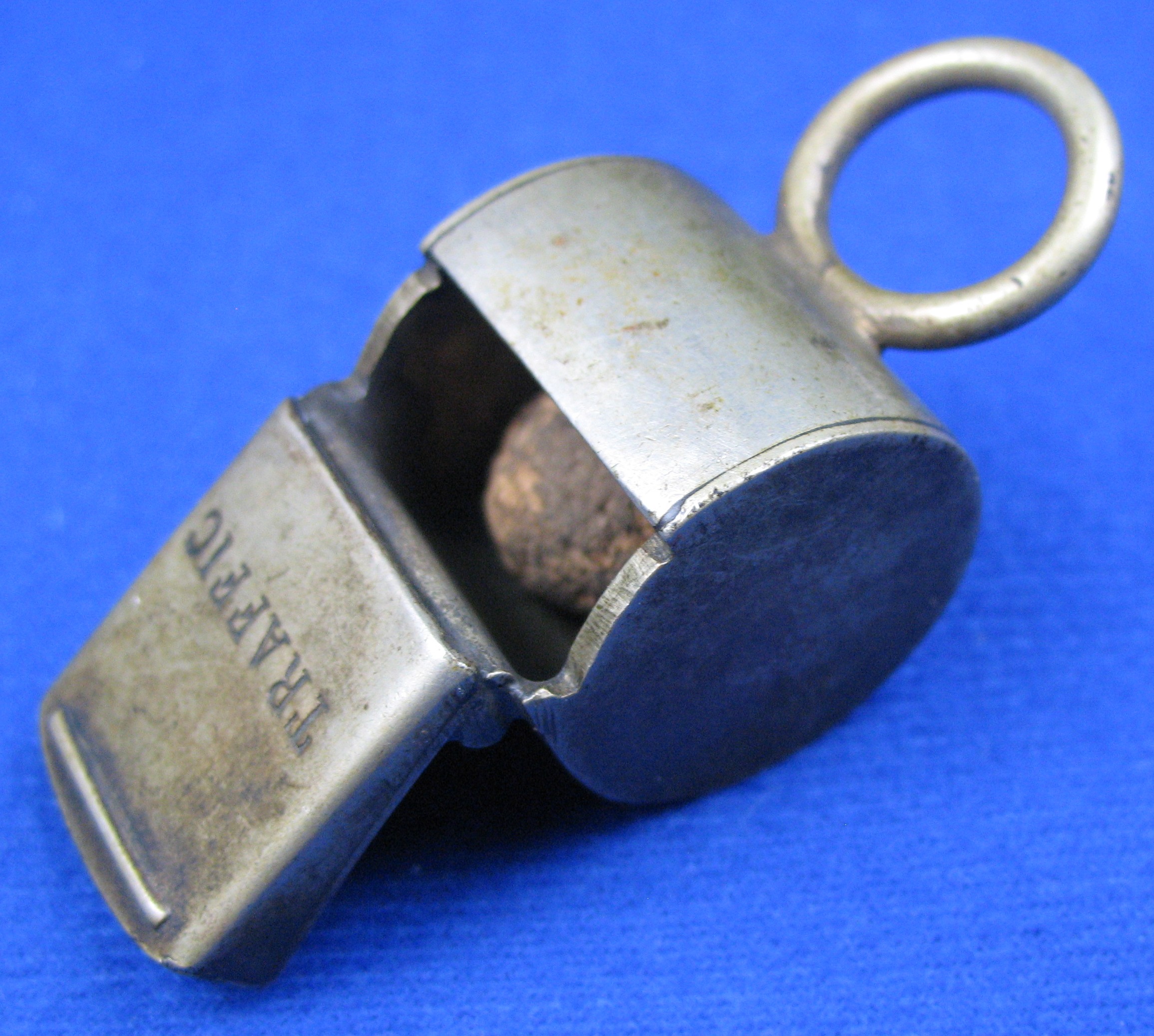
As can be seen this is an extraordinary whistle in many ways. For its time it was a very robust design. Up front is the TRAFFIC stamp aimed at the police force market. The material is of nickel silver.
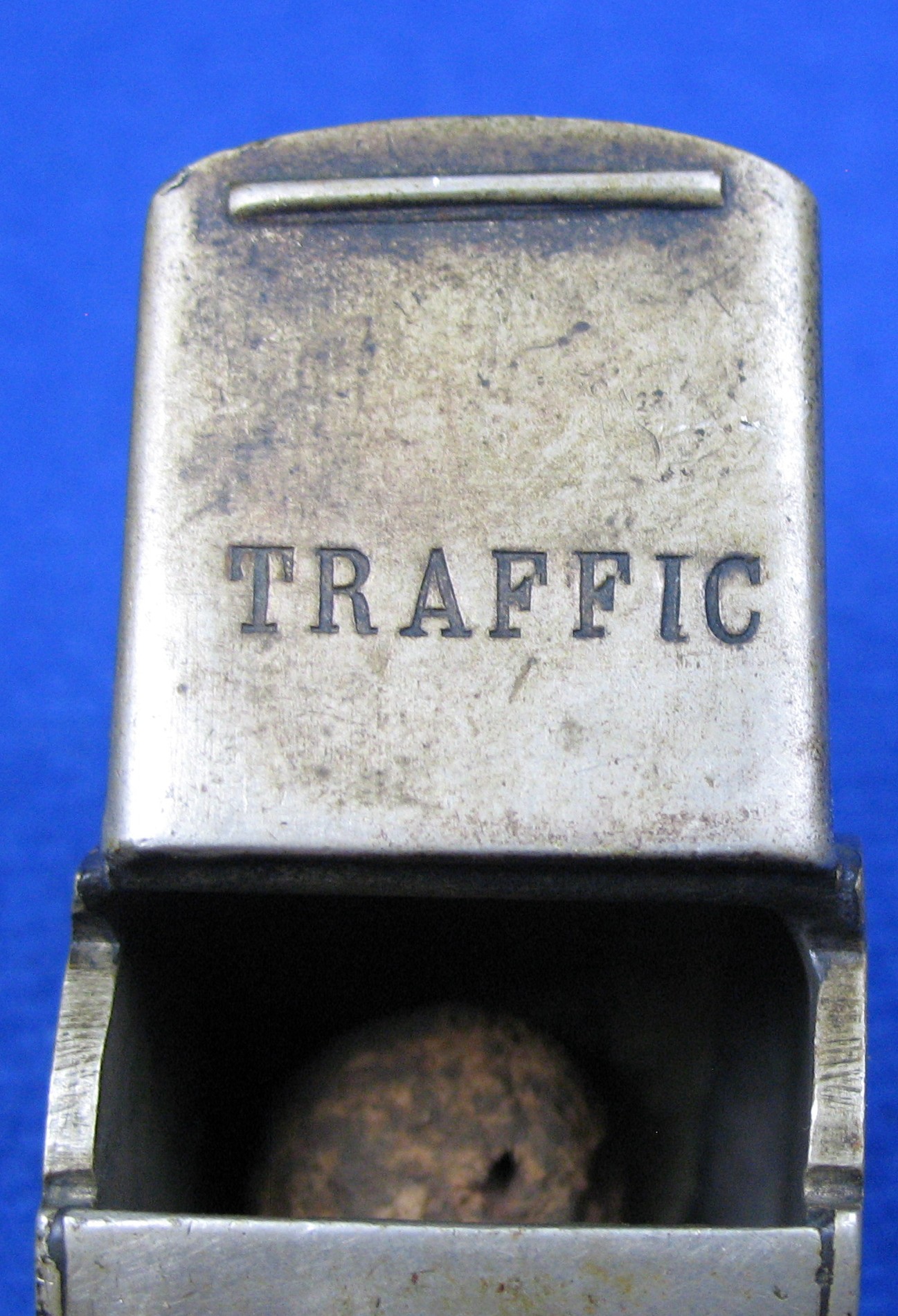
One notes next that the window is of extraordinary size and has a larger proportional cork ball.
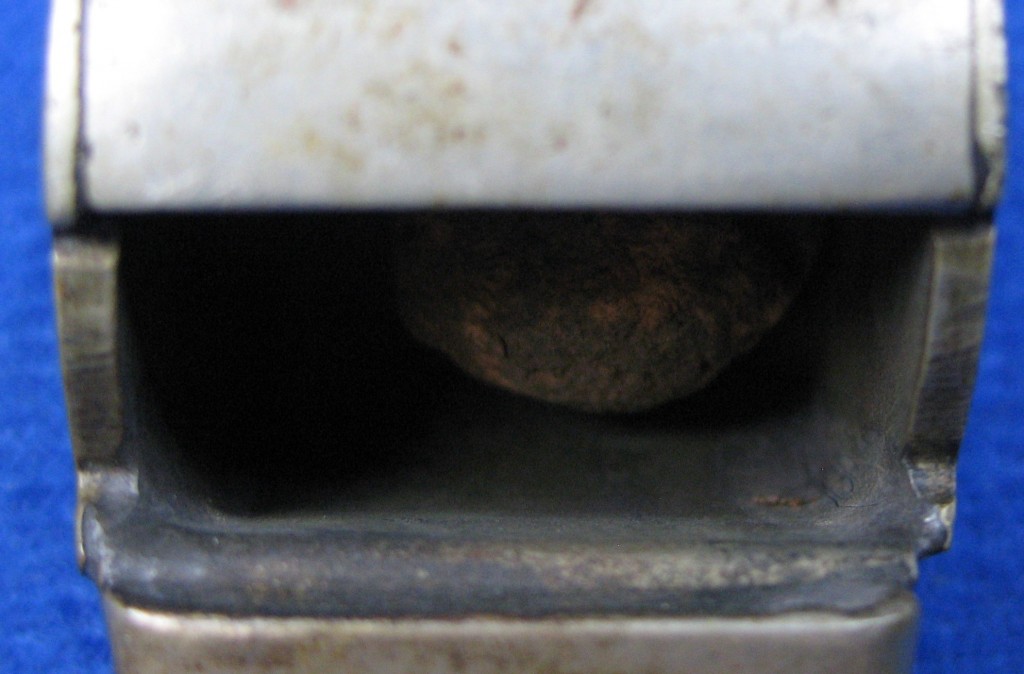
Because of this large opening the sides of the windows needed adjustment and the cuts go deep into the side of the barrel sides.
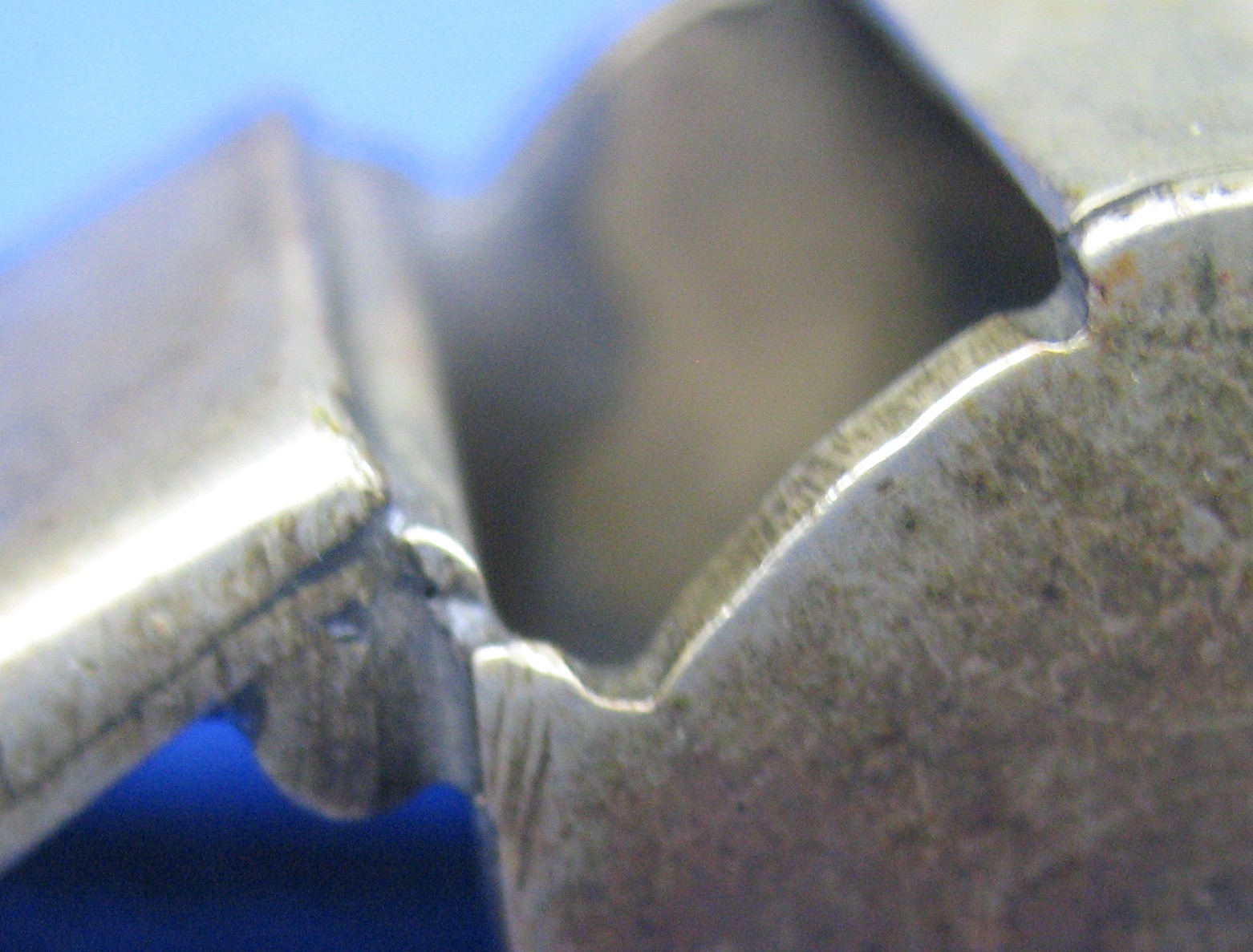
As can be seen, there needed to be added under-strengthening of the mouthpiece making it a truly 6-piece whistle. You can see from the various angles that the sides are almost twice as thick as usual, giving it tremendous rigidity although continuing to be relatively light.
Each of the tooth-grip lines are very straight and thin, but are none the less pressed out from the inside.
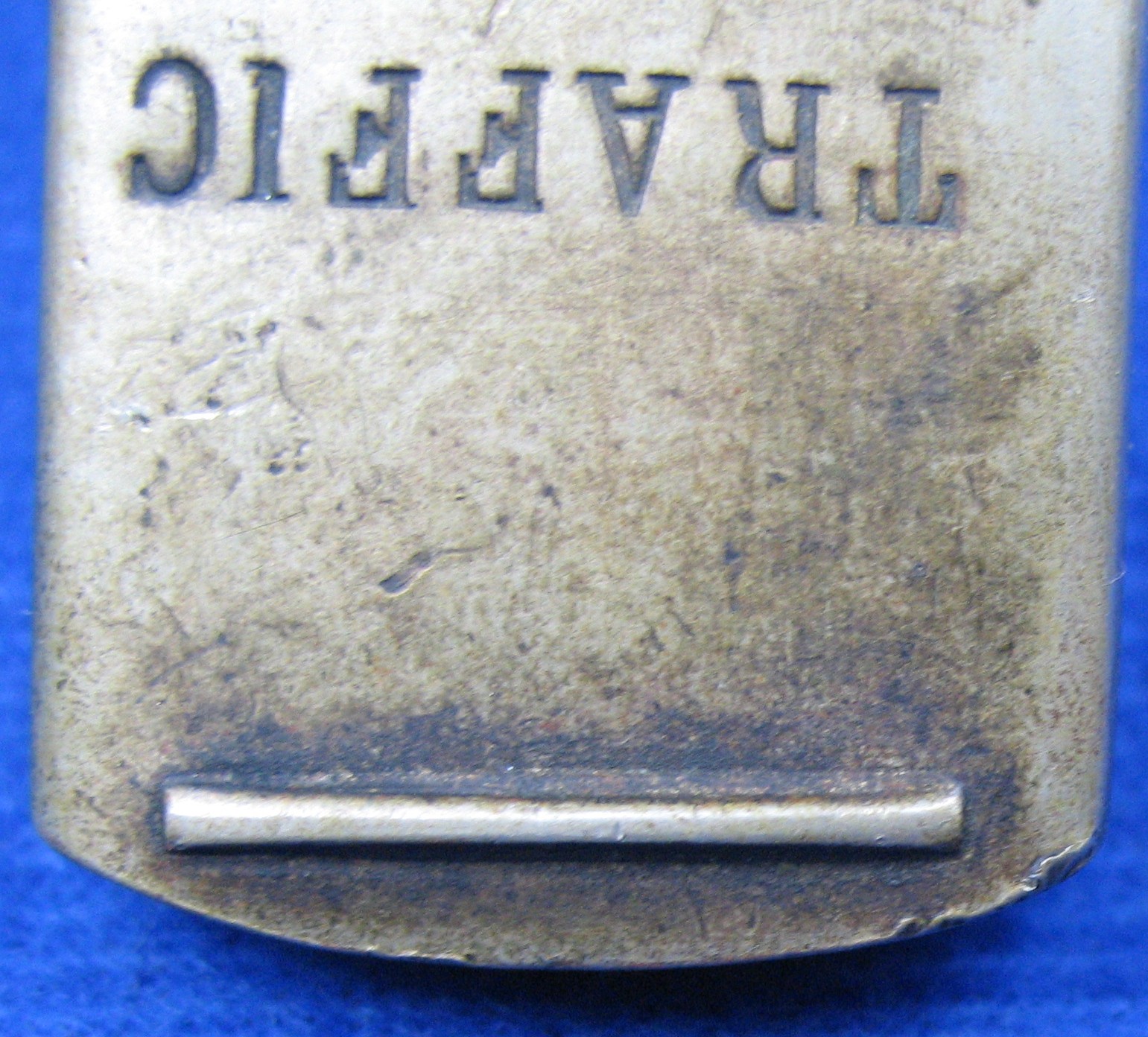
Unusually done is the top ring. Ordinarily it would be much smaller. In this case allowing it to be clipped or ringed or whatever — the size of the ring is quite large and yet is very rigidly attached.
Alternately it could easily be used as a finger ring.
Even though out of proportion at first glance, it is well balanced, and no doubt served a utilitarian purpose of the day.
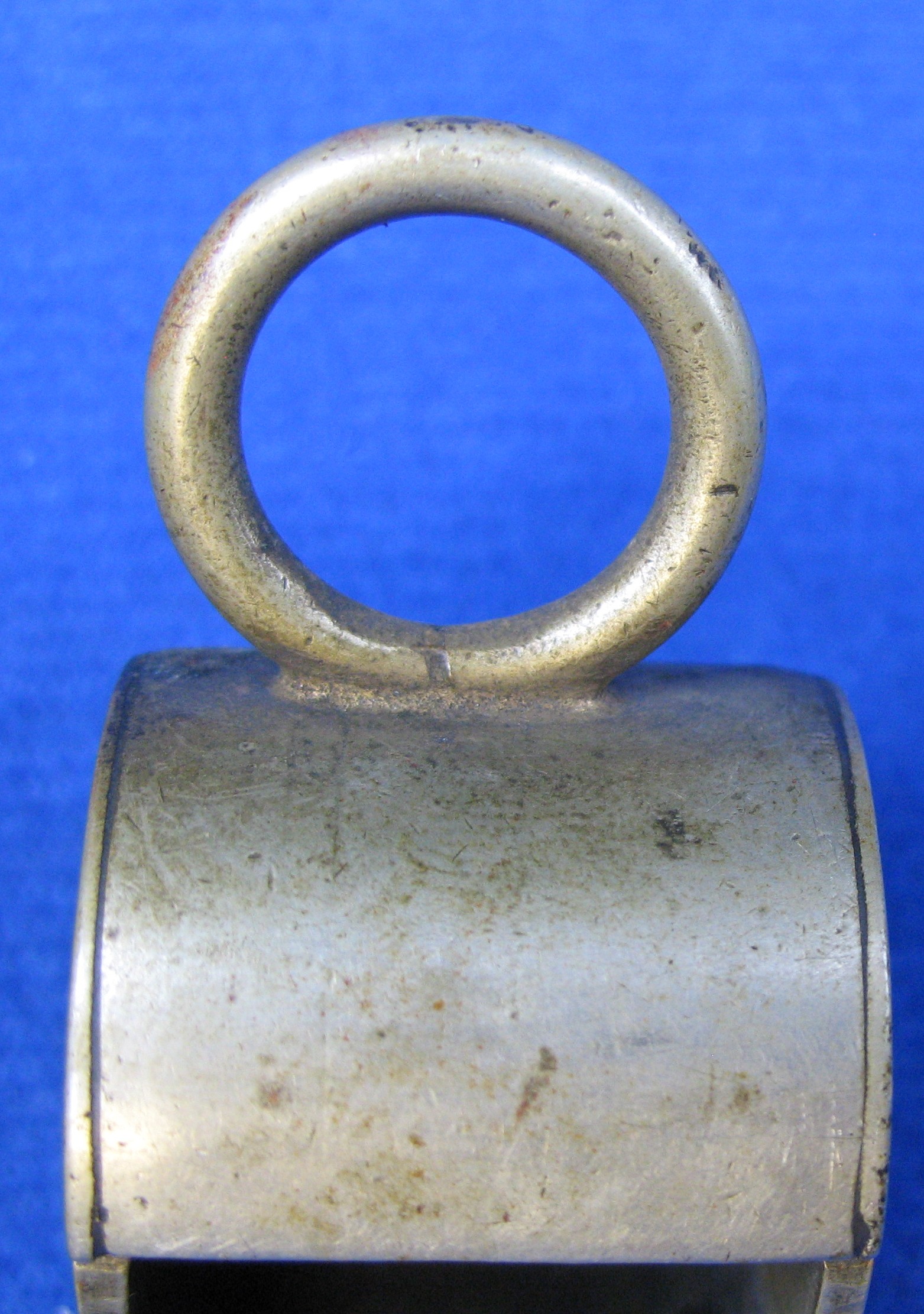
Conclusions
Perhaps other S.A. French stamped whistles will come to light, and we hope one day to find out the manufacturer of this one in particular.
The S.A. French escargot stands as a unique design. Despite forty years of business dealings with the police forces in New York, it remains scarce. It is robust and well made. No patent is known.
TWG
Posted October 18, 2013
Revised September 14, 2020
Revised February 12, 2021
Revised December 31, 2021
Revised June 19, 2022
Bibliography:
American Police Equipment: A Guide to Early Restraints, Clubs and Lanterns
Reference Collection Whistle Gallery
© – All photos with blue background property of The Whistle Gallery reference collection. Please contact The Whistle Gallery for permission of use of any website content. Spotlight articles are copyrighted. Please contact The Whistle Gallery for permission of use of any website or Spotlight article material written or otherwise. Use of photos without authorization is prohibited.
Where to Learn More:
Spotlight > Whistle Maker by Country of Origin > United States Whistle Makers > S.A. French








